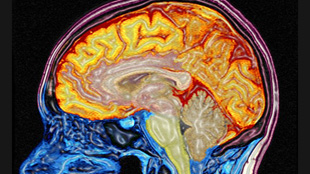 WELLCOME IMAGES, MARK LYTHGOE & CHLOE HUTTON
WELLCOME IMAGES, MARK LYTHGOE & CHLOE HUTTON
Duplications of a gene involved in development of the cortex may have boosted human brain power during early hominin evolution by enhancing neuronal connections, according to two Cell papers published online last week (May 3). The gene, SRGAP2, partially duplicated three times during the period when the human Homo lineage was emerging from Australopithecus about 2-3 million years ago.
The protein product of one duplication, dubbed SRGAP2C, appears to increase neuronal migration and connections. The duplicated gene encodes only a fragment of the original, to which SRGAP2C binds to inhibit its function. When SRGAP2C was expressed in mice, neurons migrated faster and produced more dendritic spines, protrusions that receive signals from neighboring neurons, potentially increasing the density of neural connections in the murine brains. This suggests that SRGAP2 duplications may have increased the processing power of our ancestor’s brains.
“If you’re increasing...



